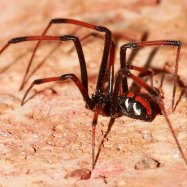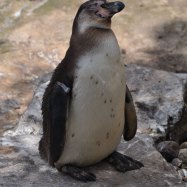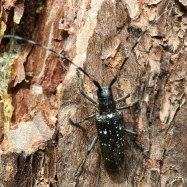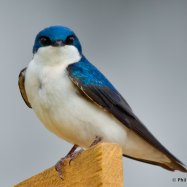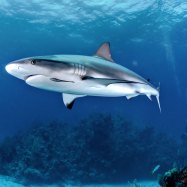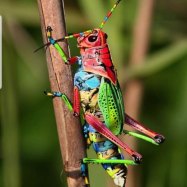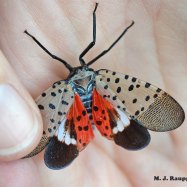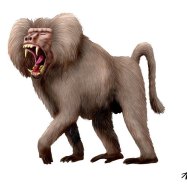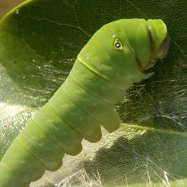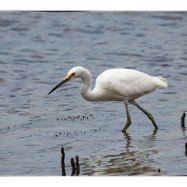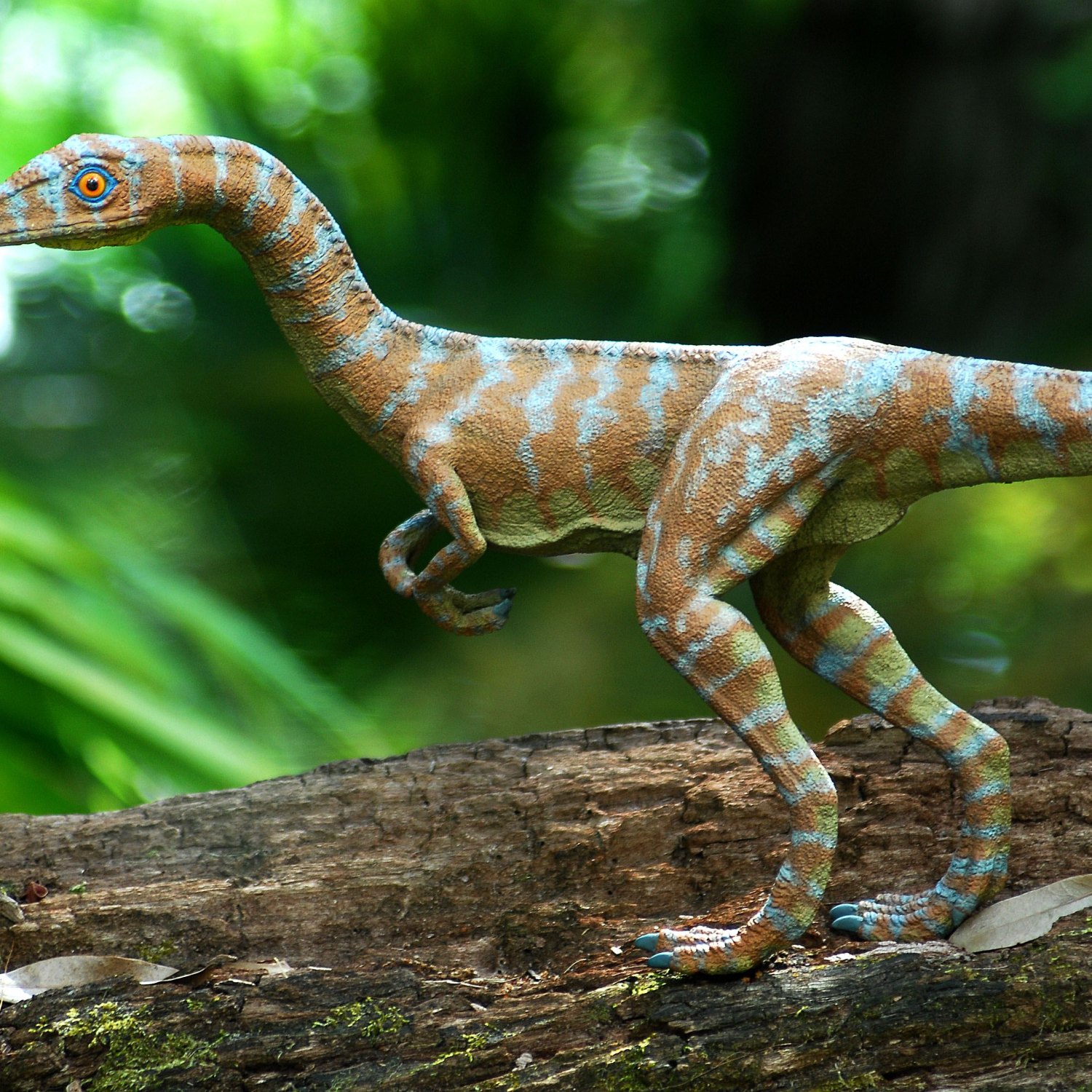
Compsognathus
1 meter
Compsognathus, the small and slender dinosaur that roamed Bavaria during the Jurassic period, was only 1 meter in length. Belonging to the Compsognathidae family, it is one of the smallest known dinosaurs. Its name translates to elegant jaw, reflecting its delicate appearance. Despite its small size, it was a fierce predator, feeding on insects and small reptiles. #Compsognathus #Dinosaur #Jurassic #Bavaria #Predator
Animal Details Summary:
Common Name: Compsognathus
Kingdom: Animalia
Habitat: Terrestrial
The Tiny Terror: Exploring the World of Compsognathus
When we think of dinosaurs, we often picture huge, intimidating creatures like the Tyrannosaurus rex or the Triceratops. However, in the world of dinosaurs, there were also smaller, but equally fascinating species. One such animal is the Compsognathus, a tiny terror from the Late Jurassic period. In this article, we will dive into the world of Compsognathus and discover its unique features and habits Compsognathus.A Brief Introduction to Compsognathus
Compsognathus, whose scientific name means "elegant jaw," is a small carnivorous dinosaur that lived in Europe during the Late Jurassic period, around 150 to 145 million years ago. Its name is derived from the Greek words "compsos," meaning elegant or delicate, and "gnathus," meaning jaw. It was first discovered in 1859 in Germany by paleontologist Joseph Oberndorfer. It is believed that Compsognathus was one of the smallest dinosaurs, with an average length of only one meter, about the size of a chicken.Classifying Compsognathus
Compsognathus belongs to the Kingdom Animalia, Phylum Chordata, and Class Sauropsida. It is a member of the order Saurischia, which means "lizard-hipped," indicating that its pelvic bones resembled those of a lizard. Within the order Saurischia, Compsognathus belongs to the family Compsognathidae, which is a group of small, carnivorous dinosaurs.Habitat and Geographical Distribution
Compsognathus was a land-dwelling, terrestrial dinosaur that inhabited Europe during the Late Jurassic period. Its fossils have been discovered in Germany, France, and Portugal Click Beetle. However, its most notable finding was in the Solnhofen limestone quarries in Bavaria, Germany. This finding was significant as it was one of the most complete fossils, including a well-preserved skeleton and a fossilized imprint of its body.Physical Appearance and Coloration
Compsognathus had a small and slender body, with long hind legs and short front legs. It had a small, lightweight head with sharp teeth, perfect for catching and eating its prey. Its body was covered in feathers, which is a unique feature for a dinosaur. The coloration of Compsognathus is not known for certain, but it is believed that it had brown, red, white, or black feathers, possibly for camouflage to protect itself from predators.Feeding Habits
Being a carnivorous dinosaur, Compsognathus had a diet primarily consisting of small prey, such as insects, lizards, and small mammals. Its small size may have also allowed it to hunt and scavenge for food in places where larger predators could not reach.The Mystery of Compsognathus Growth
There is still much mystery surrounding the growth and development of Compsognathus. Its small size and slender body structure suggest that it was a juvenile or a sub-adult, but there is no conclusive evidence to support this theory. Some paleontologists believe that it could grow up to two meters in length, while others believe that it was fully grown at one meter. Further research and fossil findings may help uncover the truth about Compsognathus's growth.A Window into the Jurassic Period
Compsognathus may have been a small and seemingly unremarkable dinosaur, but its discovery and fossils have provided scientists with valuable insights into the Jurassic period. Its close relationship to birds has helped in understanding the evolution of dinosaurs into birds. Additionally, its small size and lightweight feathers have challenged the belief that feathers were only present in larger, flight-capable dinosaurs. Compsognathus has also helped in the study of dinosaur social behavior, as multiple fossils have been discovered in one location, suggesting that they may have lived and hunted in groups.The Legacy of Compsognathus
Despite its small and slender appearance, Compsognathus has had a significant impact on the world of paleontology. It has been featured in various forms of media, including movies, TV shows, and books, further sparking interest and curiosity in these ancient creatures. Its fossils have also inspired scientific studies and research, contributing to our understanding of dinosaurs and their evolution.Conclusion
Compsognathus may not be the most well-known dinosaur, but it is undoubtedly a fascinating and unique species. Its small size, feathers, and close relationship to birds have challenged our understanding of dinosaurs, making it an essential piece in the puzzle of prehistoric life. The discovery of Compsognathus and its fossils has reminded us that there is still so much more to uncover about the ancient world and its creatures. So the next time you envision a dinosaur, remember the tiny terror, Compsognathus, and the legacy it has left behind.

Compsognathus
Animal Details Compsognathus - Scientific Name: Compsognathus
- Category: Animals C
- Scientific Name: Compsognathus
- Common Name: Compsognathus
- Kingdom: Animalia
- Phylum: Chordata
- Class: Sauropsida
- Order: Saurischia
- Family: Compsognathidae
- Habitat: Terrestrial
- Feeding Method: Carnivorous
- Geographical Distribution: Europe
- Country of Origin: Germany
- Location: Bavaria
- Animal Coloration: Brown, red, white, or black
- Body Shape: Small and slender
- Length: 1 meter
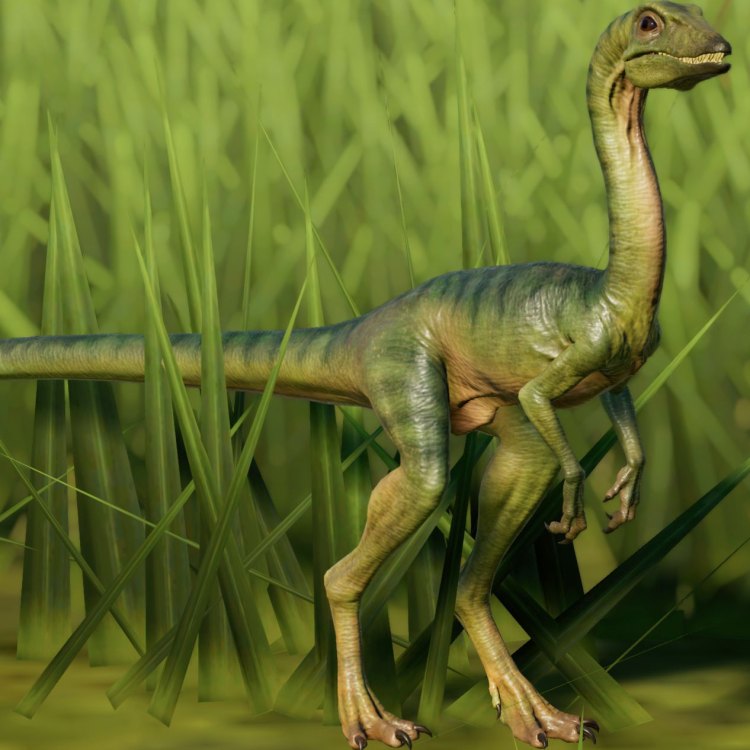
Compsognathus
- Adult Size: Small
- Average Lifespan: Unknown
- Reproduction: Egg laying
- Reproductive Behavior: Unknown
- Sound or Call: Unknown
- Migration Pattern: Non-migratory
- Social Groups: Unknown
- Behavior: Unknown
- Threats: Extinction
- Conservation Status: Extinct
- Impact on Ecosystem: Unknown
- Human Use: Fossil specimens for scientific study
- Distinctive Features: Long legs, sharp teeth, and long tail
- Interesting Facts: Compsognathus was one of the smallest known dinosaur species and was a fast and agile runner.
- Predator: Unknown
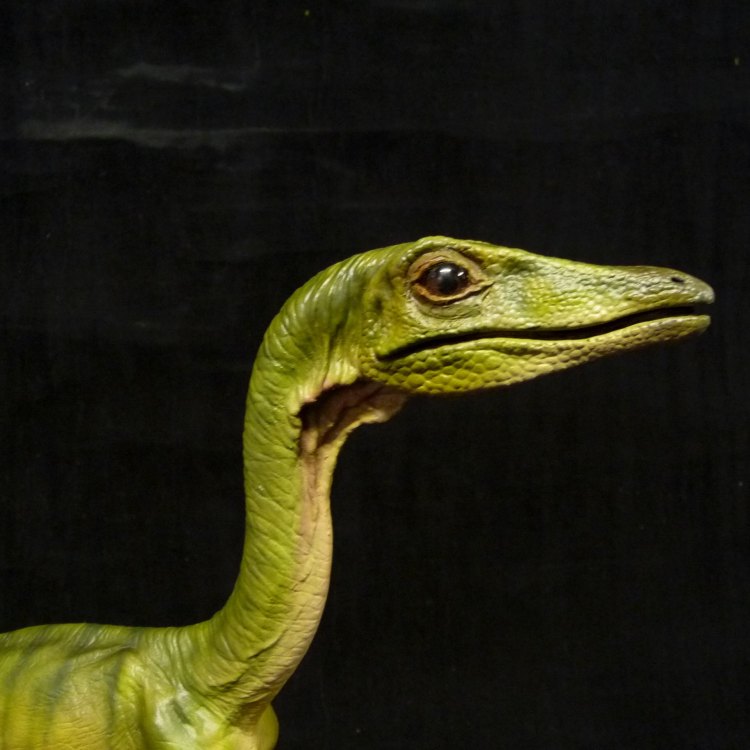
Compsognathus
The Fascinating World of Compsognathus: The Tiny Dinosaur That Roamed the Earth
When we think of dinosaurs, we often imagine giant creatures roaming the earth, but there were also smaller species that had just as much charm and intrigue. One such species is Compsognathus, a small dinosaur that has captured the hearts of many with its unique features and interesting facts. In this article, we will dive into the world of Compsognathus, exploring its size, behavior, threats, and the impact it had on the ecosystem. So, let's take a trip back in time and discover the fascinating world of Compsognathus PeaceOfAnimals.Com.Compsognathus, also known as Compy, was an intriguing dinosaur species that lived during the Late Jurassic period around 150 million years ago. Its name comes from the Greek words "kompsos," meaning "elegant," and "gnathos," meaning "jaw." This name was given due to its delicate appearance and sharp jaw, which makes it a truly unique species of dinosaur.
Adult Size:
One of the most distinctive features of Compsognathus was its small size. It was one of the smallest known dinosaurs, with an estimated length of 3 feet and a weight of just 6 pounds. To put that into perspective, it was about the size of a chicken, making it one of the tiniest dinosaurs ever discovered. Its size is what makes this species so fascinating and sets it apart from its larger dinosaur counterparts.
Average Lifespan:
Unfortunately, the average lifespan of Compsognathus is still unknown due to the limited fossil record of this species. Scientists estimate that they could have lived up to 10-15 years, but there is no concrete evidence to support this Common Yellowthroat. However, what we do know is that they were a short-lived species, much like other small animals in the wild.
Reproduction:
Researchers believe that Compsognathus reproduced through egg-laying, like most other dinosaurs. However, there is no concrete evidence of their reproductive behavior, and thus it remains a mystery.
Reproductive Behavior:
Much like other aspects of this species, the reproductive behavior of Compsognathus is still unknown. In the absence of evidence, scientists can only speculate on the potential mating habits of this intriguing species.
Sound or Call:
One of the unique things about Compsognathus is that we do not know what sound they made, if at all. Since there is no evidence of their vocal cords or larynx, scientists cannot say for sure if they produced any sounds. However, based on their close evolutionary relation to birds, it is safe to assume that they may have used chirps and calls to communicate.
Migration Pattern:
Compsognathus was a non-migratory species, meaning they did not travel long distances like other large dinosaur species. They were thought to have lived in a specific habitat and did not migrate from one place to another.
Social Groups:
The social behavior of Compsognathus is also a mystery due to the limited fossil record of this species. It is believed that they may have lived in small groups, but there is no solid evidence to support this theory. As such, the social groups of Compsognathus remain unknown.
Behavior:
Since there is not much information available about the behavior of Compsognathus, scientists can only speculate on its behavior. It is believed that they were fast and agile runners, which allowed them to hunt and evade predators quickly. They were also thought to be opportunistic feeders, scavenging for food when necessary.
Threats:
Sadly, Compsognathus, like most dinosaur species, faced extinction. It is believed that the cause of their extinction was due to the same event that wiped out the dinosaurs, an asteroid impact. Since they were small and fragile creatures, they were unable to survive the catastrophic impact that changed the course of the Earth's history.
Conservation Status:
Since Compsognathus went extinct over 65 million years ago, it is considered an extinct species. Its conservation status cannot be determined because it is not a living species, but it has provided a wealth of knowledge to scientists about the history of dinosaurs and the Earth.
Impact on Ecosystem:
The impact of Compsognathus on the ecosystem cannot be accurately determined due to the limited fossil record. However, its presence would have played a vital role in the food chain, as they were opportunistic feeders and would have contributed to facilitating the transfer of energy and nutrients in their ecosystem.
Distinctive Features:
Compsognathus had several distinctive features that make it an interesting species to study. Its most prominent features were its long slender legs, sharp teeth, and long tail. These features are what allowed them to be fast and agile predators, able to chase down prey and defend themselves from larger predators.
Interesting Facts:
Compsognathus may have been small, but it was packed with interesting facts that make it stand out in the world of dinosaurs. As mentioned earlier, it was one of the smallest known dinosaur species and was also one of the fastest. It was estimated to be able to run at a speed of 40 miles per hour, making it a truly remarkable creature.
Predator:
The identity of Compsognathus' predator is unknown. Due to its small size, it is likely that they were hunted by larger predators such as Allosaurus, Ceratosaurus, and Stegosaurus. However, due to the limited fossil record, we cannot say for sure who their predators were.
In conclusion, Compsognathus may have been a small and short-lived species, but it has left a lasting impression on the world of paleontology. Its unique features and interesting facts have captivated scientists and the general public alike, making it a popular dinosaur species to learn about. While there is still much we do not know about this intriguing species, its limited fossil record has provided valuable insights into the world of dinosaurs and their role in the Earth's history. So, the next time you think of dinosaurs, don't forget about Compsognathus, the tiny but mighty dinosaur that roamed the Earth.
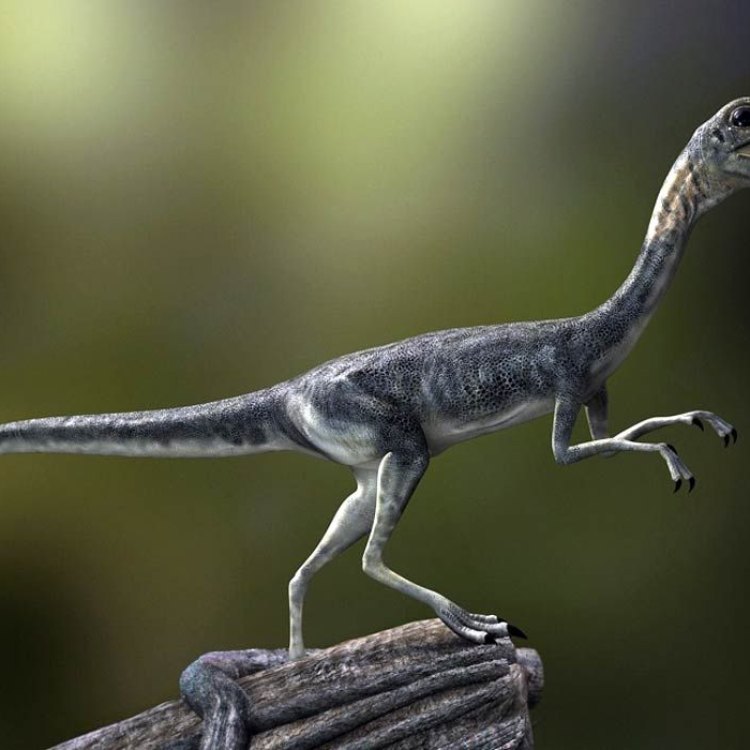
The Tiny Terror: Exploring the World of Compsognathus
Disclaimer: The content provided is for informational purposes only. We cannot guarantee the accuracy of the information on this page 100%. All information provided here may change without prior notice.

